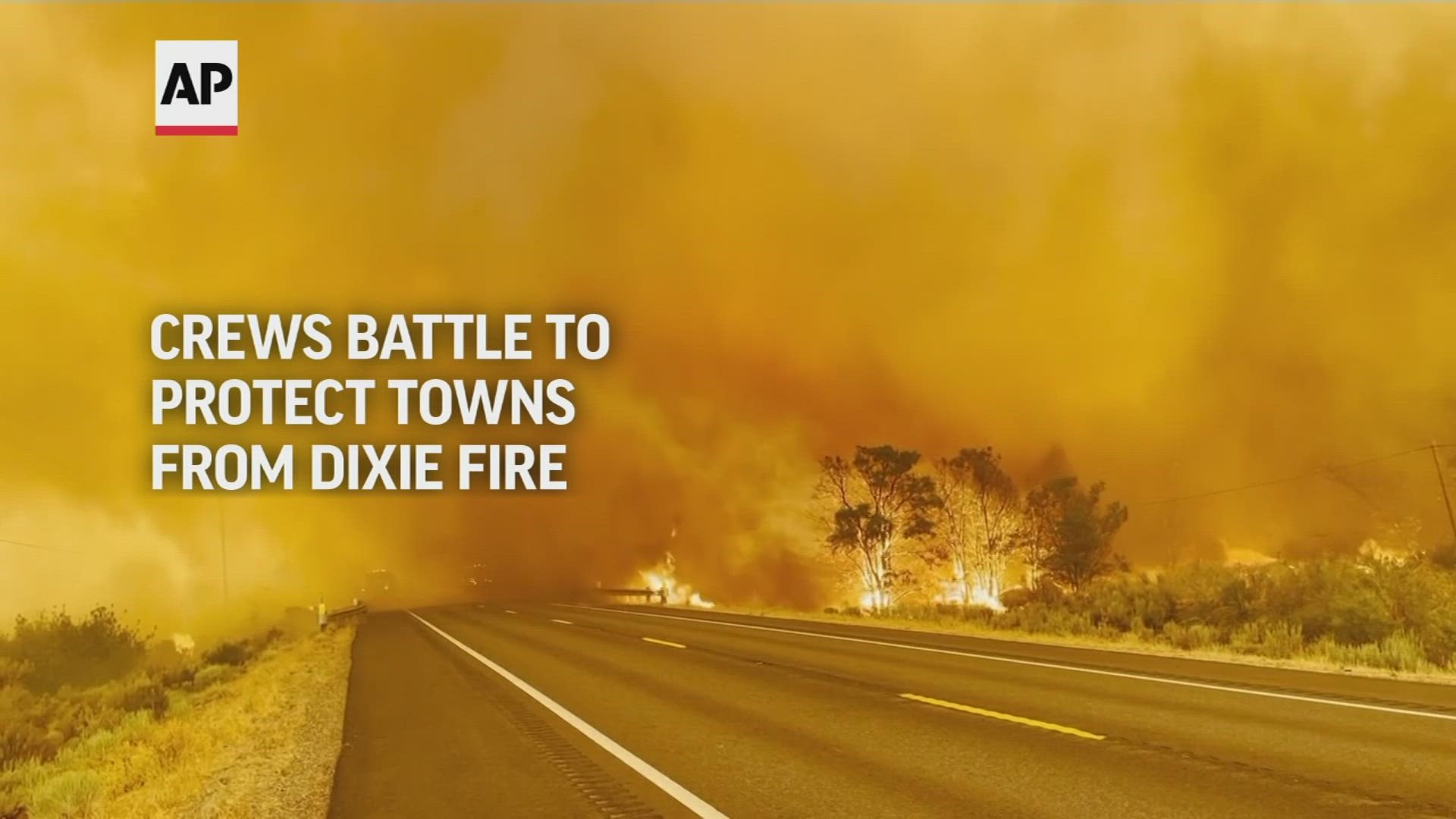LOS ANGELES — Smoke from California’s wildfires choked people on the East Coast. Flames wiped out a Gold Rush-era town. The acreage burned would dwarf the state of Rhode Island.
Images of homes engulfed in flames and mountains glowing like lava would make it easy to conclude the Golden State is a charred black landscape.
That’s hardly the case, but the frightening reality is that the worst may be yet to come.
California has already surpassed the acreage burned at this point last year, which ended up setting the record. Now it’s entering a period when powerful winds have often driven the deadliest blazes.
“Here we are — it’s not the end of August and the size and distribution and the destruction of summer 2021 wildfires does not bode well for the next months,” said Bill Deverell, a University of Southern California history professor who teaches about fire in the West. “The suggestion of patterns across the last two decades in the West is deeply unsettling and worrisome: hotter, bigger, more fires."
More than a dozen large wildfires are burning in California grass, brush and forest that is exceptionally dry from two years of drought likely exacerbated by climate change.
The fires, mainly in the northern part of the state, have burned more than 1 million acres, or 2,000 square miles (5,180 square kilometers).
Firefighters are witnessing extreme fire behavior as embers carried miles by gusts are igniting vegetation ripe for burning in rugged landscapes, where it's hard to attack or build a perimeter to prevent it from spreading.
The Dixie Fire, the largest currently burning and second biggest on record, wiped out the historic town of Greenville and continues to threaten thousands of homes about 175 miles (282 kilometers) northeast of San Francisco. The Caldor Fire, burning about 100 miles (161 kilometers) to the south, blew up since Saturday, torched parts of the hamlet of Grizzly Flat and is chewing through dense forest.
John Hawkins, a retired fire chief for the state and now wildland fire consultant, said he's never seen such explosive fire behavior in 58 fire seasons.
A fire 50 years ago that torched 100 homes and killed two people near Yosemite National Park once had the record for fastest expansion, covering nearly 31 square miles (80 square kilometers) in two hours. But that kind of spread is becoming more common today.
“The Harlow Fire of 1961 was one of a kind in its day,” Hawkins said. “As we draw a comparison today, it’s not one of a kind, it’s one after another. Something has changed.”
Hawkins said he saw similarly rapid growth in the Caldor Fire.
Dramatic time lapse video showed a massive plume growing above thick forest. The column rose up and dark smoke poured across the sky before the cloud erupted in flames shooting hundreds of feet in the air.
“It wasn’t a slow deal,” Hawkins said. “When you see one of those develop that fast in heavy timber and already see another dozen fires in California running crazy it doesn’t take much to light your lightbulb or ring your bell.”
Ten of the state's largest and 13 of the most destructive wildfires in the top 20 have burned in the last four years.
The largest of those fires, the August Complex, a group of lightning-sparked blazes that merged, began a year ago this week. The deadliest and most destructive, the Camp Fire, killed 85 and destroyed nearly 19,000 buildings in November 2018.
In the past, forest fires have been dominant in late summer and fires in the fall have burned in chaparral and woodlands, driven by powerful dry winds created by high pressure over the Great Basin, said Malcolm North, a researcher with the U.S. Forest Service.
The offshore winds, known as Diablos in Northern California and Santa Anas in Southern California, usually have powered some of the worst blazes as they sap vegetation of moisture and pick up speed as they squeeze through mountain passes and canyons, becoming warmer and even drier.
Erratic infernos like the Creek Fire last year, the fifth-biggest ever, could be blamed in part on a 2012-16 drought. It is estimated to have killed more than 100 million trees in the Sierra Nevada, the state's largest mountain range and the setting for many of the fires, North said.
North was co-author of a 2018 scientific paper that predicted Sierra wildfires could burn at the intensity of blazes lit by fire bombings in Dresden, Germany and Tokyo during World War II.
“I do think that's what we're seeing,” said North. “The current models we have for how fires are going to behave don’t cover this because it’s just off the charts. It’s hazardous to firefighters and hard as hell to predict what it’s going to do."
North and others said they worry about the firefighters who have been working long hours for over a month on the Dixie Fire and move from one blaze to the next.
After the Caldor Fire erupted early this week, crews were sent there Wednesday from the Dixie Fire.
Fire chiefs were hoping to begin building a containment line around the fire as winds were predicted to die down.
Any new blaze, like the French Fire that popped up Wednesday near Lake Isabella, 110 miles (177 kilometers) north of Los Angeles, could hamper those efforts by diverting firefighters, trucks and water- and retardant-dropping aircraft.
Repositioning those crews also takes time, allowing the newer blazes time to advance.
“Every time a new one starts it's like going to Toys R Us on Christmas Eve expecting to get a gift," Hawkins said, “and finding nothing on the shelf."

